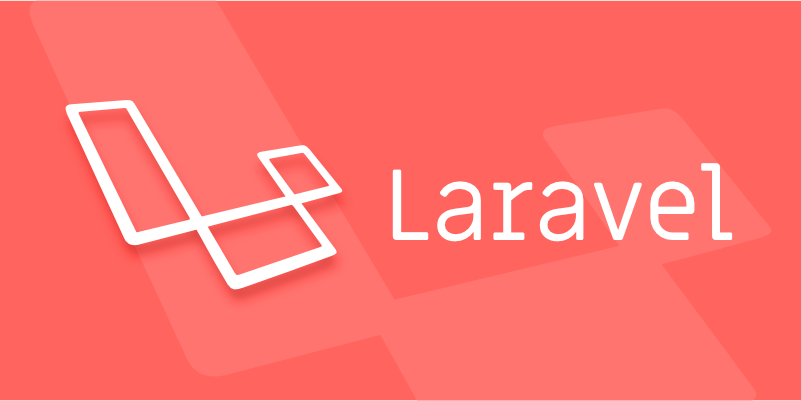Differentiating between Laravel Policies and Gates for authorization
Jul 07, 2025 am 12:46 AMIn Laravel, use Gates for general authorization checks not tied to models and Policies for model-specific logic. Gates are simple closures ideal for global permissions like edit-settings, while Policies organize actions like update or delete around specific models. Use Gates when logic is straightforward and Policies when dealing with model ownership or complex rules. Avoid misusing Gates for model-based checks, overloading Gates with conditions, or failing to register Policies properly. Gates and Policies can coexist, allowing flexibility as app complexity grows.

When it comes to handling authorization in Laravel, two main tools are available: Policies and Gates. While both serve the same purpose—determining whether a user can perform a specific action—their use cases and structures differ. Knowing when to use one over the other helps keep your app organized and maintainable.

Let’s break down what each does best and how they fit into real-world scenarios.

What Are Laravel Gates?
Gates are simple, closure-based checks that determine if a user can perform a specific action. They’re ideal for general authorization logic that doesn’t tie directly to a model.
For example:

Gate::define('edit-settings', function ($user) {
return $user->isAdmin();
});You can then check this gate anywhere using:
if (Gate::allows('edit-settings')) {
// Proceed
}Use gates when:
- You're authorizing actions that aren't tied to a specific model.
- The logic is straightforward and not likely to grow complex.
- You need a quick way to centralize small permission checks.
They’re especially handy for global permissions like “access-admin-panel” or “delete-any-post”.
What Are Laravel Policies?
Policies, on the other hand, are classes tied to specific models. They help organize authorization logic around those models. For example, a PostPolicy might handle actions like view, create, update, and delete for the Post model.
You generate a policy with Artisan:
php artisan make:policy PostPolicy --model=Post
Then define methods inside it:
public function update(User $user, Post $post)
{
return $user->id === $post->author_id;
}Check it in your controller like this:
$this->authorize('update', $post);Use policies when:
- Authorization logic is closely tied to a particular model.
- You expect the logic for a model’s permissions to grow over time.
- You want better organization and separation of concerns in larger apps.
This makes them perfect for things like checking if a user owns a resource before editing it.
When to Choose Gates vs Policies
Here's a quick comparison to guide your decision:
- ? Use gates for generic permissions across your app (like accessing admin features).
- ? Use policies when dealing with model-specific actions (like editing a post or deleting a comment).
Another practical tip:
If you find yourself writing a lot of gates related to a single model, consider switching to a policy. It keeps things cleaner and easier to manage as complexity grows.
Also, gates and policies can coexist. You can mix and match depending on what makes sense for each part of your application.
A Few Common Mistakes to Avoid
It’s easy to misuse gates and policies, especially when starting out. Here are some pitfalls to watch for:
- ? Using gates for everything—even when tied to models. This leads to messy code later.
- ? Overloading a single gate with too many conditions. Keep gates focused.
- ? Not registering policies properly. If a policy isn’t bound to a model in
AuthServiceProvider, Laravel won’t use it. - ? Forgetting to pass the model instance when calling
authorize(). Policies rely on it for context.
One thing that trips people up is thinking that gates and policies are mutually exclusive. In reality, they complement each other well.
So basically, gates are for general checks and policies are for model-based ones. Pick whichever fits your scenario better—and don’t be afraid to switch between them as your needs evolve.
That’s about it.
The above is the detailed content of Differentiating between Laravel Policies and Gates for authorization. For more information, please follow other related articles on the PHP Chinese website!

Hot AI Tools

Undress AI Tool
Undress images for free

Undresser.AI Undress
AI-powered app for creating realistic nude photos

AI Clothes Remover
Online AI tool for removing clothes from photos.

Clothoff.io
AI clothes remover

Video Face Swap
Swap faces in any video effortlessly with our completely free AI face swap tool!

Hot Article

Hot Tools

Notepad++7.3.1
Easy-to-use and free code editor

SublimeText3 Chinese version
Chinese version, very easy to use

Zend Studio 13.0.1
Powerful PHP integrated development environment

Dreamweaver CS6
Visual web development tools

SublimeText3 Mac version
God-level code editing software (SublimeText3)
 Working with pivot tables in Laravel Many-to-Many relationships
Jul 07, 2025 am 01:06 AM
Working with pivot tables in Laravel Many-to-Many relationships
Jul 07, 2025 am 01:06 AM
ToworkeffectivelywithpivottablesinLaravel,firstaccesspivotdatausingwithPivot()orwithTimestamps(),thenupdateentrieswithupdateExistingPivot(),managerelationshipsviadetach()andsync(),andusecustompivotmodelswhenneeded.1.UsewithPivot()toincludespecificcol
 Sending different types of notifications with Laravel
Jul 06, 2025 am 12:52 AM
Sending different types of notifications with Laravel
Jul 06, 2025 am 12:52 AM
Laravelprovidesacleanandflexiblewaytosendnotificationsviamultiplechannelslikeemail,SMS,in-appalerts,andpushnotifications.Youdefinenotificationchannelsinthevia()methodofanotificationclass,andimplementspecificmethodsliketoMail(),toDatabase(),ortoVonage
 Understanding Dependency Injection in Laravel?
Jul 05, 2025 am 02:01 AM
Understanding Dependency Injection in Laravel?
Jul 05, 2025 am 02:01 AM
Dependency injection automatically handles class dependencies through service containers in Laravel without manual new objects. Its core is constructor injection and method injection, such as automatically passing in the Request instance in the controller. Laravel parses dependencies through type prompts and recursively creates the required objects. The binding interface and implementation can be used by the service provider to use the bind method, or singleton to bind a singleton. When using it, you need to ensure type prompts, avoid constructor complications, use context bindings with caution, and understand automatic parsing rules. Mastering these can improve code flexibility and maintenance.
 Strategies for optimizing Laravel application performance
Jul 09, 2025 am 03:00 AM
Strategies for optimizing Laravel application performance
Jul 09, 2025 am 03:00 AM
Laravel performance optimization can improve application efficiency through four core directions. 1. Use the cache mechanism to reduce duplicate queries, store infrequently changing data through Cache::remember() and other methods to reduce database access frequency; 2. Optimize database from the model to query statements, avoid N 1 queries, specifying field queries, adding indexes, paging processing and reading and writing separation, and reduce bottlenecks; 3. Use time-consuming operations such as email sending and file exporting to queue asynchronous processing, use Supervisor to manage workers and set up retry mechanisms; 4. Use middleware and service providers reasonably to avoid complex logic and unnecessary initialization code, and delay loading of services to improve startup efficiency.
 Managing database state for testing in Laravel
Jul 13, 2025 am 03:08 AM
Managing database state for testing in Laravel
Jul 13, 2025 am 03:08 AM
Methods to manage database state in Laravel tests include using RefreshDatabase, selective seeding of data, careful use of transactions, and manual cleaning if necessary. 1. Use RefreshDatabasetrait to automatically migrate the database structure to ensure that each test is based on a clean database; 2. Use specific seeds to fill the necessary data and generate dynamic data in combination with the model factory; 3. Use DatabaseTransactionstrait to roll back the test changes, but pay attention to its limitations; 4. Manually truncate the table or reseed the database when it cannot be automatically cleaned. These methods are flexibly selected according to the type of test and environment to ensure the reliability and efficiency of the test.
 Choosing between Laravel Sanctum and Passport for API authentication
Jul 14, 2025 am 02:35 AM
Choosing between Laravel Sanctum and Passport for API authentication
Jul 14, 2025 am 02:35 AM
LaravelSanctum is suitable for simple, lightweight API certifications such as SPA or mobile applications, while Passport is suitable for scenarios where full OAuth2 functionality is required. 1. Sanctum provides token-based authentication, suitable for first-party clients; 2. Passport supports complex processes such as authorization codes and client credentials, suitable for third-party developers to access; 3. Sanctum installation and configuration are simpler and maintenance costs are low; 4. Passport functions are comprehensive but configuration is complex, suitable for platforms that require fine permission control. When selecting, you should determine whether the OAuth2 feature is required based on the project requirements.
 Implementing Database Transactions in Laravel?
Jul 08, 2025 am 01:02 AM
Implementing Database Transactions in Laravel?
Jul 08, 2025 am 01:02 AM
Laravel simplifies database transaction processing with built-in support. 1. Use the DB::transaction() method to automatically commit or rollback operations to ensure data integrity; 2. Support nested transactions and implement them through savepoints, but it is usually recommended to use a single transaction wrapper to avoid complexity; 3. Provide manual control methods such as beginTransaction(), commit() and rollBack(), suitable for scenarios that require more flexible processing; 4. Best practices include keeping transactions short, only using them when necessary, testing failures, and recording rollback information. Rationally choosing transaction management methods can help improve application reliability and performance.
 Handling HTTP Requests and Responses in Laravel.
Jul 16, 2025 am 03:21 AM
Handling HTTP Requests and Responses in Laravel.
Jul 16, 2025 am 03:21 AM
The core of handling HTTP requests and responses in Laravel is to master the acquisition of request data, response return and file upload. 1. When receiving request data, you can inject the Request instance through type prompts and use input() or magic methods to obtain fields, and combine validate() or form request classes for verification; 2. Return response supports strings, views, JSON, responses with status codes and headers and redirect operations; 3. When processing file uploads, you need to use the file() method and store() to store files. Before uploading, you should verify the file type and size, and the storage path can be saved to the database.






